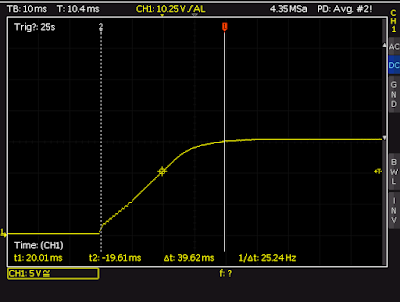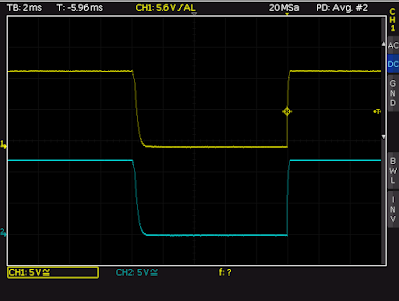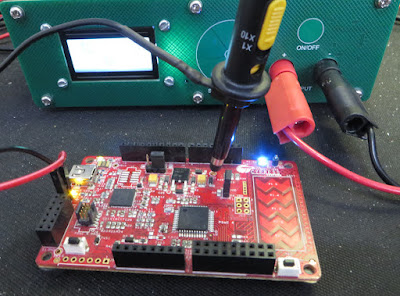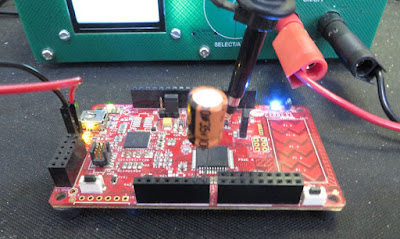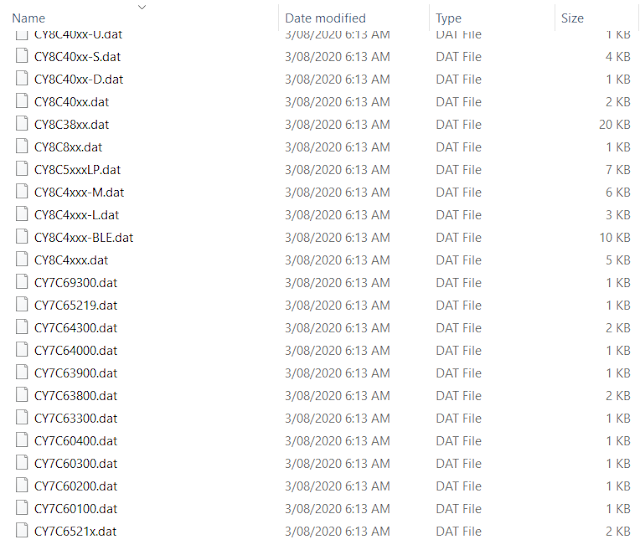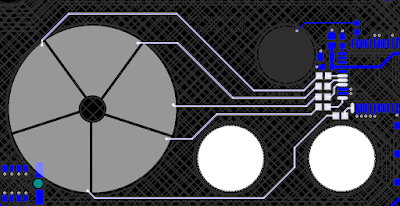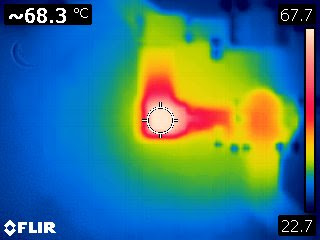Introduction
This blog illustrates portions of hardware that can be salvaged from a Billion ADSL model BiPAC 7700N R2.
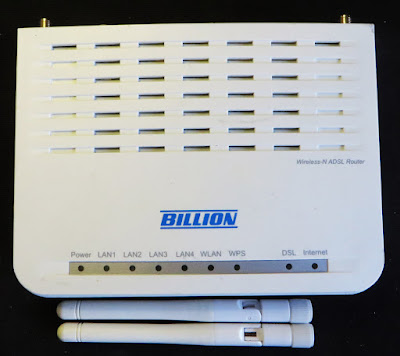 |
| Billion BiPAC 7700N R2 ADSL Modem |
Salvaging
The Billion model 7700N contained two user-fitted external antennas and an AC wall adaptor DC 12 V 1A. Due to the age of the antennas, the plastic around the screw portion of the antenna was perishing. Reusing would be possible since the plastic on the connector does not affect functionality.
 |
| Billion ADSL Modem Antennas |
To access the internals of the modem, the four rubber feet on the bottom side of the model hide the plastic screws. Removing these allows access to the circuit board. For anyone with a 3D printer or repair cafe, the four plastic screws could be of use.
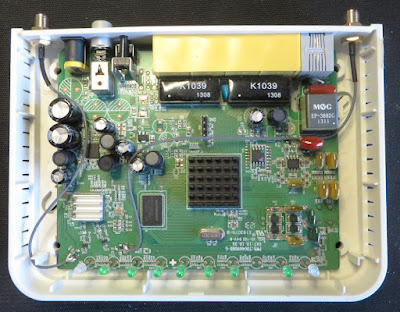 |
| Billion BiPAC 7700N Internals |
Two gold-plated SMA connectors can be salvaged however these are chassis mount and may not suit all designs.
 |
| Billion BiPAC 7700N Circuit Board |
The two small aluminium heatsinks were easily pried off the Broadcom chips. Either the smaller silver-coloured heatsink (11 mm x 11 mm) or the larger black-coloured heatsink (20 mm x 20 mm) could be repurposed on other designs or single-board computers such as the Raspberry Pi.
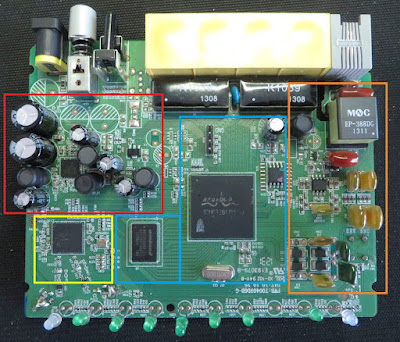 |
| Billion BiPAC 7700N Circuit Board (ID Blocks) |
The summary below relates to the components in the areas identified by the coloured boxes in the above image.
Red Box
The power supply uses a Texas Instruments triple output buck converter, TPS65251. The internal MOSFET resistances are suitable for a project; the overall efficiency is quite reasonable.
The passives surrounding the buck converter device are the support capacitors (EFC) and inductors. These parts could be salvaged if needed.
The associated right-angle PCB mount DC power jack and push-button power switch could be salvaged. It is presumed that the number of DC jack mating cycles and push-button switch actuations was minimal therefore repurposing would carry low risk.
Yellow Box
The Wi-Fi interfacing was managed by the Broadcom BCM43225 chip; likely not worth salvaging. Providing the clock for the Wi-Fi chip is an external 20 MHz crystal, worth removing as this is a standard 4-pin device.
Blue Boxes
The main CPU is a Broadcom BCM63281TK; likely not worth salvaging. Both the Macronix MX25L6445E serial flash and Winbond 256 Mb DDR2 DRAM W9725G6KB-25 may be useable devices. The external HC49S 20 MHZ crystal could be removed.
Orange Box
ADSL communications are handled by the Broadcom ADSL driver 6301KSG; only worth salvaging if required for repair or other projects. The associated ADSL line components, such as the line transformer and capacitors (100 V) would be worth salvaging for related projects or repairs.
Sundry Items
The remaining RJ-styled connectors and leaded LEDs could be salvaged for other projects.
 |
| Billion BiPAC 7700N Circuit Board Bottom Side |
Flipping the circuit board over shows the reset switch and the obligatory passives such as inductors and decoupling capacitors. These passive components are not usually worth salvaging however as with any hardware salvage, the devices are based on the requirement.
















